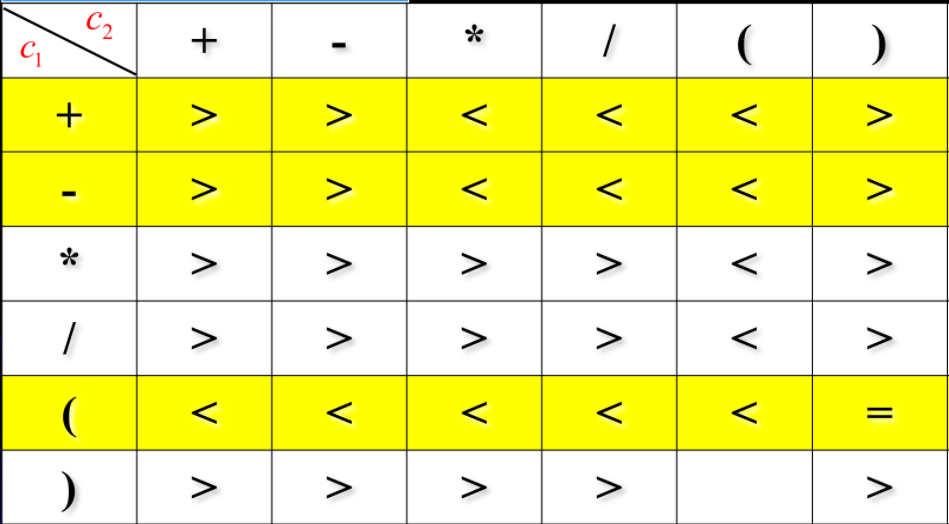表达式求值
本题也算一个很经典的栈的应用了
思路分析
计算中缀表达式,需要用到两个栈,一个栈存储数字,另一个存储运算符
其次如何计算?
1.读入数字则存储
可以通过自带的$isdigit()$函数判断一个字符是否是数字,也可以通过$ASCII$码自己实现函数判断
因为字符串是一个整体,所以我们采用一个双指针维护一段区间,j指向数字
int x = 0, j = i;
while (j < str.size() && isdigit(str[j]))
x = x * 10 + str[j ++ ] - '0';
i = j - 1;
j最后指的是数字后面第一个运算符,因为每一轮 $i ++ $, 所以$j = i - 1$
2.读入字符,则优先级判断
栈顶运算符,和即将入栈的运算符的优先级比较:
如果栈顶的运算符优先级低,新运算符直接入栈
如果栈顶的运算符优先级高(或者相等),先出栈计算,新运算符再入栈
括号是优先级最高的,遇到左括号,入栈,遇到右括号,就一直计算直到遇到左括号

优先级存储问题
写判断函数比较麻烦,于是,我们采用哈希表来映射字符与优先级的关系,数字越大优先级越高,数字相等,在前面的优先级高(这是易于理解的,$1 + 2 + 3$,先算$1 + 2$, $1 + 2 * 3$, 先算 $2 * 3$)
unordered_map<char, int> h{ {'+', 1}, {'-', 1}, {'*',2}, {'/', 2} };
代码
#include <iostream>
#include <cstring>
#include <algorithm>
#include <stack>
#include <unordered_map>
using namespace std;
stack<int> num;//数字栈
stack<char> op;//字符栈
void eval()
{
auto b = num.top(); num.pop(); // 取出第二个操作数
auto a = num.top(); num.pop(); // 取出第一个操作数
auto c = op.top(); op.pop(); // 取出操作符
int x; //进行运算
if (c == '+') x = a + b;
else if (c == '-') x = a - b;
else if (c == '*') x = a * b;
else x = a / b;
num.push(x); //运算结果入栈
}
int main()
{
unordered_map<char, int> pr{{'+', 1}, {'-', 1}, {'*', 2}, {'/', 2}}; //优先级映射表
string str;
cin >> str;
for (int i = 0; i < str.size(); i ++ )
{
auto c = str[i];
if (isdigit(c)) //读入数字
{
int x = 0, j = i;
while (j < str.size() && isdigit(str[j]))
x = x * 10 + str[j ++ ] - '0';
i = j - 1;
num.push(x);
}
else if (c == '(') op.push(c); //左括号直接入栈
else if (c == ')') //有括号,一直运算,直到碰到左括号
{
while (op.top() != '(') eval();
op.pop();
}
else // 若栈顶优先级大于等于当前运算符,则运算,运算完后运算符入栈
{
while (op.size() && op.top() != '(' && pr[op.top()] >= pr[c]) eval();
op.push(c);
}
}
while (op.size()) eval(); //若还有运算符没计算,则持续计算
cout << num.top() << endl; //输出栈顶元素
return 0;
}

